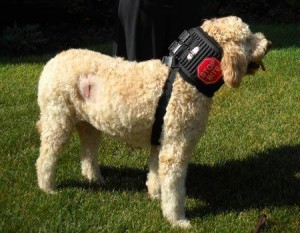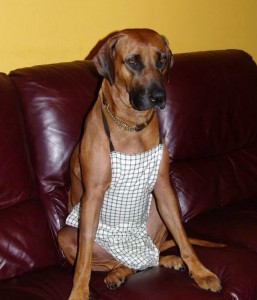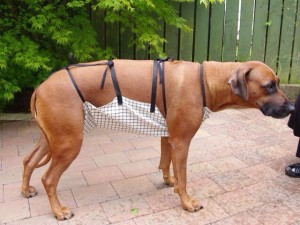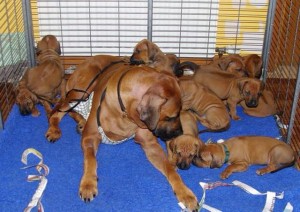Licking wounds/stitches: When a dog has an injury, be that an irritation, a wound or stitches after surgery, the natural thing for him to do is to try to lick the area to clean it, reduce irritation or soothe himself. Unfortunately licking can be more harm than good as the saliva may cause bacterial infection. He may nibble and pull at stitches with catastrophic results and sometimes may simply lick and lick and lick to excess making the irritation worse.
So, what do you do to stop it? Well, there are several ways you can come at this problem and some can be used simultaneously. Of course you could simply use a basket muzzle but this is neither very good as a longer term solution or one that I would wish to use when the dog was unsupervised. Other, more preferable alternatives are:
Obviously, there is the tried and tested Elizabethan collar: a cone-shaped piece of plastic that fastens to the dog’s collar and prevents him from reaching back to nibble or lick any part of his body. There is no doubt that this device works but a lot of dogs find it very uncomfortable, it restricts their peripheral vision and also takes chunks out of your shins, skirting boards and woodwork!
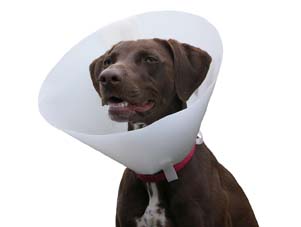
This Elizabethan style collar also comes in softer fabrics now – still in the same design but with much less damage to your woodwork and less obtrusive for your dog.
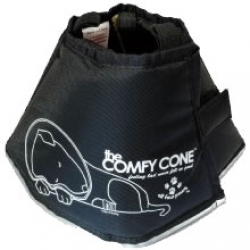
A similar alternative to the Elizabethan style is a soft neck brace type of collar
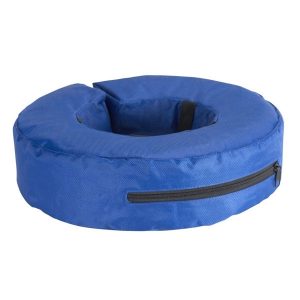
or an inflatable version like those used by travellers on long-haul flights.
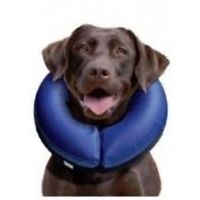
You can also make a DIY version of this device by simply stuffing the leg of a pair of tights with soft fabric and then tying it around his neck. This versions of the collar will again prevent the dog from turning his head back on himself as the Elizabethan collar does but, as this collar simply goes around the neck rather than all the way over his head, it does mean that longer-bodied dogs may still be able to reach various parts of their anatomy such as the feet and lower legs.
A harder more of a “Neck Brace” type of collar is also available and is a little more heavy duty. This design is called Stop Bite and does not restrict peripheral vision at all.
If none of these collars appeal to you, you can of course cover the wound with a dressing of some sort:
Paw/Leg: a bandage or child’s sock for a lower leg or paw injury (simply slip it over the paw and secure with Micropor tape or vetwrap ensuring that you do not do so too tightly to restrict blood flow).
Upper Body/Shoulder/Torso: a child’s t-shirt is excellent for this (simply slip it onto your dog and then tie a knot in the top to prevent it rolling up.
Lower Body/Abdomen: take a length of material and stitch it into a tube that you can have the dog wear as a body stocking. Attach ties to the top of the stocking and loop his collar through them to prevent the stocking rolling down.
Nipples: a friend and follower of Rhodes 2 Safety, Elizabeth Halliday sent me these fantastic pictures. During the very hot summer of 2013, her bitch was nursing a litter and developed severe mastitis. The mastitis required surgery in the end and obviously this meant that the pups could no longer suckle from the affected teat. To protect the operation site and prevent the pups suckling, the very talented Carol Ann Carlton fashioned an apron specifically for Chana. You will see that it not only covers the teats, but also is open at the back. This apron was much better than a full shirt as it also prevented her from overheating. Great idea and not too difficult to make.
Lower Body/Upper Thighs: a child’s pair of shorts provides an excellent cover for this part of the body – stretchy ones in particular like cycling shorts or long-legged trunk style underpants work a treat. If the waist band is not tight enough to stay up on it’s own, simply apply a couple of loops to the waist band and slot the collar through the loops a little like braces.
There are also various medical shirts that look a little like leotards, specifically designed for dogs following medical procedures. This one is by NWVetHospital.com but there are other companies who make them too.
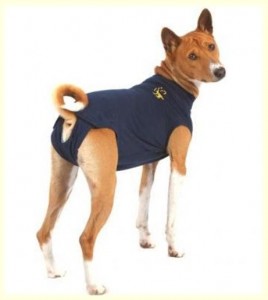
Of course you may simply decide to apply something that the dog does not like the taste of in the general vicinity of the wound to put him off licking. Please be sure that you do not get it on the wound itself as this may cause further irritation and hinder the healing process.
Another option is to apply an anti-lick stip. These are applied over the top of the usual dressing and have an unpleasant taste. The intention is to stop the dog removing his dressings to deter licking and nibbling. They can be found in various stores but this particular version is made by KYHorse.com
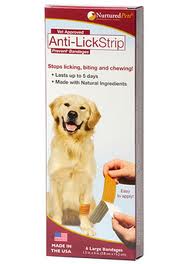
Often, if we can stop the wound itching as it heals, we can stop the dog taking so much interest in it too so it’s worth considering potions and lotions that will help reduce the discomfort and itching to use alongside a collar or dressing. Simply applying something like Aloe Vera or Calendula can really help and there are many other products which can be purchased over the counter but please ensure that they are suitable for use with dogs.
Another alternative is to use something like colloidal silver spray to try to soothe the area. Ive had good reports about this one so perhaps its something worth considering too
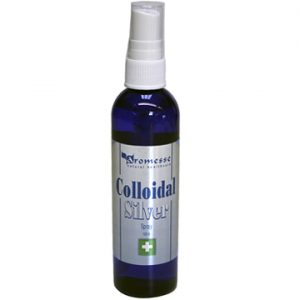
http://www.aromesse.com/skin-problem/petnat-colloidal-silver-spray.html

